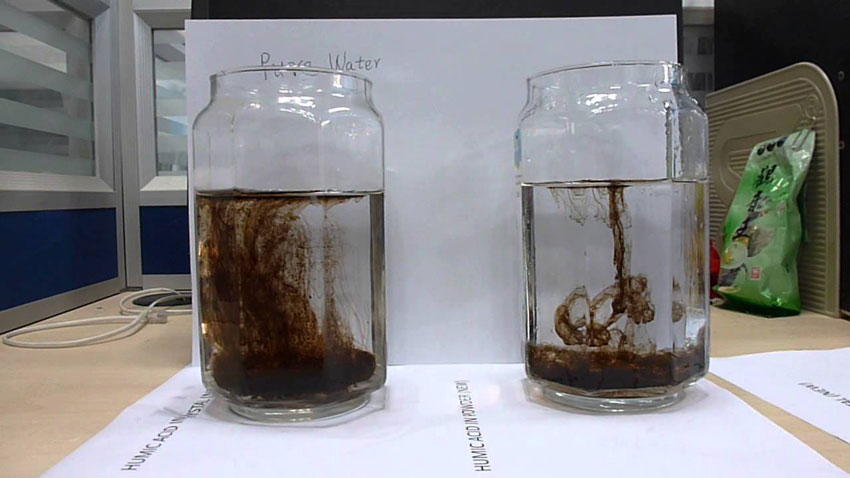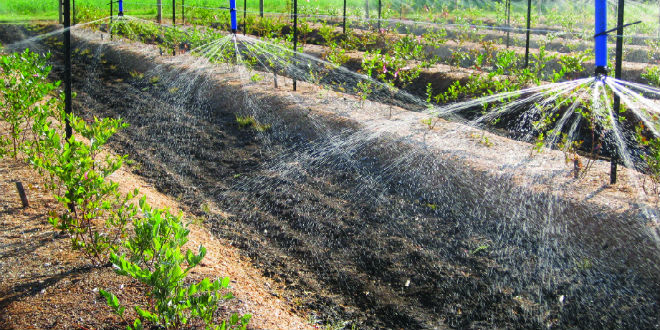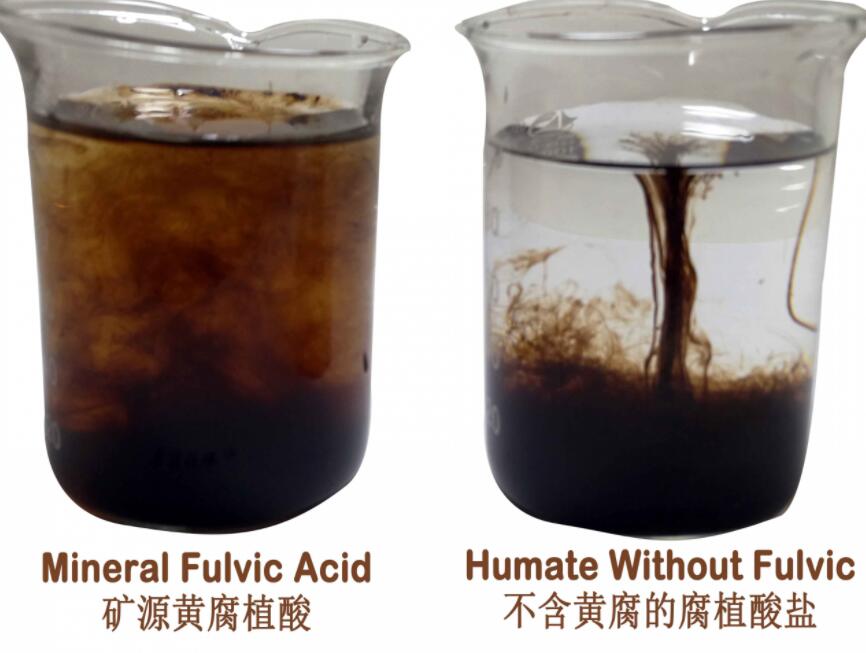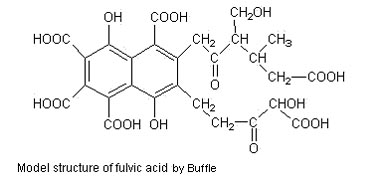About the efficiency of humic acid product on pesticides, have been a lot of reports at home and abroad from the early 1960s. The recent reports, most of the content to directly discuss the interaction of humic acid and pesticides, the results can be summarized as follows:
Effect of Humic Acid Product on Pesticide
1. Dissolution on pesticides
Humic acid has been widely used in many industries at home and abroad.
It is showing that the surface tension of the alkali metal salt of peat humic acid and weathered coal humic acid is reported to varying degrees lower than that of water, and the surface tension of the humate on water in water solution can be reduced up to 7-26 kfactor / cm.
In contrast, weathered coal humic acid reduces less surface tension of water, but it has large molecular weight and higher hydrophilic group content, which can be regarded as a polymer surfactant that can play a good dispersion and emulsifying effect on pesticides.
In the interaction of pesticides and natural organic matter, the surface tension of different concentrations of sodium humate solution was determined. The determination data show that humic acid has moderate intensity surface activity, and the effect of reducing the surface tension of water may increase the solubility of soluble pesticides.
Its experimental cases show that the solubility of DDT in 0.5% sodium humate solution is at least 20 times that in water. This example only shows the dissolution degree of humic acid to pesticides, which is not proposed, but it is not proposed that the solution process does not equal to its solubility dissolution process is not important.

2. Efficiency of humic acid on pesticides
The study on the efficiency of humic acid on pesticides, reported only in domestic literature is enough to illustrate the significant effect of the compatibility use of humic acid and pesticides, including pesticides, fungicides, herbicides and plant growth regulators.
- – Specific examples are using humic acid chelated with copper or crou to prevent and control cucumber downy mildew. Humic acid can improve the effect of copper on cucumber downy mildew, in the greenhouse and in outdoor planting by 27.2% and 46.9% respectively.
- – Using fulvic acid with methyl tobutin and polyspirit to prevent and control peanut leaf disease, replacing a third of the dosage with humic acid can still achieve the control effect.The prevention and control effect can be improved by 57.8% and 38.8% respectively.
- – Specially combinating with antibacteria to prevent apple rot disease, Increase the prevention efficiency after 60 days by 43.4%;
- – Use sodium humate on avocado to prevent aphids, Its aphid eradication rate can reach 100%;
- – Combinating with herbicide weed blight, steady killing, Shaack, and 2.4-D butyl esters have achieved relatively significant results.
These examples have been able to illustrate the effect of humic acid on pesticides in agricultural production.

3. Degradation of pesticides
Foreign workers have studied the degradation effect of humic acid on organophosphorus pesticides, In the research example, humic acid is mixed with methyl parathion in a ratio of 10:3 and methyl parathion without humic acid is compared with the measurement of changes over time, the decomposition rates after 15 days at 40°C are 2.6% and 14.1% respectively. The decomposition rates of pesticides after 30 days at 40°C were 5.8% and 29.7% respectively.
This example illustrates, the decomposition rates of humic acid to the pesticide methyl parathion under the experimental conditions were 5.8% and 29.7% respectively. The decomposition rate of humic acid on the pesticide methyl parathion can be reduced by 80% under the experimental conditions.
The other four commonly used pesticides and different ratios of humic acid substances tested with time at 40 ℃ for 30 days, see Table 1.
| Table 1 The effect of humic acid substances on reducing the decomposition rate of pesticides | ||||||||||||
|---|---|---|---|---|---|---|---|---|---|---|---|---|
| 2.2% | Isodaobijing | Moth pine | Fenphos | Fenthion | ||||||||
| Humic Acid(%) | 0 | 3.5 | 7 | 0 | 3.5 | 7 | 0 | 3.5 | 7 | 0 | 3.5 | 7 |
| Decomposition rate(%) | 4.7 | 0.9 | 0.9 | 5.7 | 0.9 | 0.5 | 11.5 | 2.4 | 2.0 | 4.4 | 1.4 | 1.0 |
| reduce(%) | 80.9 | 80.9 | 84.2 | 91.2 | 79.1 | 82.6 | 68.2 | 77.3 | ||||
The data in the table shows that humic acid substances have a significant effect on reducing the decomposition rate of the pesticides tested. Domestic research reports are based on the release rate of pesticides, such as methamidophos with humic acid and its salts as carriers under different conditions.
The result is that when humic acid and methamidophos have different ratios, there are different release rates, and the release rate becomes slower as the amount of humic acid increases.
4. Can reduce the toxicity of pesticides
As mentioned earlier, humic acid substances have the effects of solubilizing, increasing efficiency and reducing the decomposition rate of pesticides. What kind of impact will these effects have about Toxicity of pesticides after use?
This is a problem that everyone is more concerned about. With this problem, Jingfeng humic acid researchers have separately studied four commonly used pesticides: omethoate, dimethoate, dimethamidine, and pyrethroid with the acute combined toxicity of fulvic acid.

First, we determined the oral LD50 of the tested sample of mice, the order of the tested samples is Omethoate, Dimethoate, Insectamidine, Methothrin and Fulvic acid.
Its LD50 is 17.8, 382.3, 825, 161.2 and 2000mg/kg respectively. The acute combined toxicity test of four commonly used pesticides and fulvic acid is to mix and orally give test mice at a dose of one-half LD50.
Observation for one week, the mortality rate is 0. According to data reports, after humic acid is compounded with the pesticide lindane, its LD50 is 6.25 times higher than lindane and 4.58 times higher than lindane EC. It can be seen that the toxicity of humic acid substances compounded with pesticides to mammals can be greatly reduced.
The above is the effect of humic acid product in the field of pesticides summarized by the author. Hope this article can play a role in promoting and helping the development of humic acid.








